
Roots
The whisper of the winds, carrying ancestral echoes through centuries, reminds us that hair, especially textured hair, has never simply been a crown of coils and kinks; it has been a living archive, a repository of lineage, a map of belonging. Across epochs of forced migration, from the brutal Middle Passage to the perilous crossings of internal displacement, the very fibers of textured hair held secrets, narratives, and unyielding declarations of identity. It was a language spoken when tongues were silenced, a canvas when expressions were forbidden, a profound testament to the enduring spirit that refused to be severed from its source.
How did strands, so seemingly delicate, bear such immense weight? This journey into the heart of textured hair heritage reveals how deeply intertwined identity and survival became for those navigating unimaginable upheaval.

Hair Anatomy and the Ancestral Fabric
To truly grasp the symbolic weight textured hair carried, one must first recognize its elemental biology, a marvel of natural design that has served generations. The distinctive helical structure, the unique distribution of melanin, and the often elliptical cross-section of textured hair strands—these are not random occurrences. They are the result of countless generations adapting, thriving in diverse environments, and passing down a biological blueprint rich with resilience. This anatomical specificity, a hallmark of Black and mixed-race hair, meant it possessed inherent qualities that rendered it more than just adornment; it was a practical tool and a cultural touchstone.
Its tightly wound coils, for instance, offered natural protection against harsh sun and dust, a biological advantage in many ancestral lands, a quality carried into new, often hostile, environments. This innate capacity for protection became a quiet act of defiance, a visual link to a past that was violently denied.
Scientific inquiry now confirms what ancestral wisdom always understood ❉ the diversity within textured hair is vast. From loosely spiraling waves to tightly compacted z-patterns, each variation carries a unique story of adaptation and inherited strength. This scientific lens, however, must always be viewed through the prism of heritage. Our understanding of the cuticle layers, the cortex’s strength, and the medulla’s presence becomes richer when we see these structures not just as biological components, but as the physical manifestation of an unbroken chain of ancestry.

Classification Systems and Cultural Narratives
The ways we classify textured hair today, while seemingly modern, often echo or inadvertently perpetuate historical biases. Yet, beneath these systems, older, more nuanced understandings of hair typology existed within various African societies. Before external impositions, hair classification was tied to social standing, age, marital status, and even spiritual roles. Hair was not just “curly” or “coily”; it was “the hair of a married woman of the Fulani,” or “the hair prepared for a coming-of-age ceremony.” These traditional classifications were dynamic, reflecting the hair’s capacity for transformation and its integral role in communal rites and individual expression.
Textured hair, through its very structure, embodied resilience and connection for those enduring the unfathomable trials of forced migration.
During forced migration, particularly the transatlantic slave trade, these intricate, heritage-based understandings were brutally stripped away. Hair, once a vibrant marker of identity and community, was often shaved, shorn, or forcibly straightened as a means of dehumanization and control. Yet, even in this deliberate obliteration, the memory of these traditional classifications persisted in subtle ways.
Whispers of ancestral terms, the quiet knowledge of how specific hair types behaved, how they could be manipulated for survival or coded communication, became a form of hidden resistance. The forced imposition of a monolithic “Black hair” identity, meant to erase diverse heritages, inadvertently forged a new, shared identity rooted in the experience of oppression and the collective memory of a once varied past.
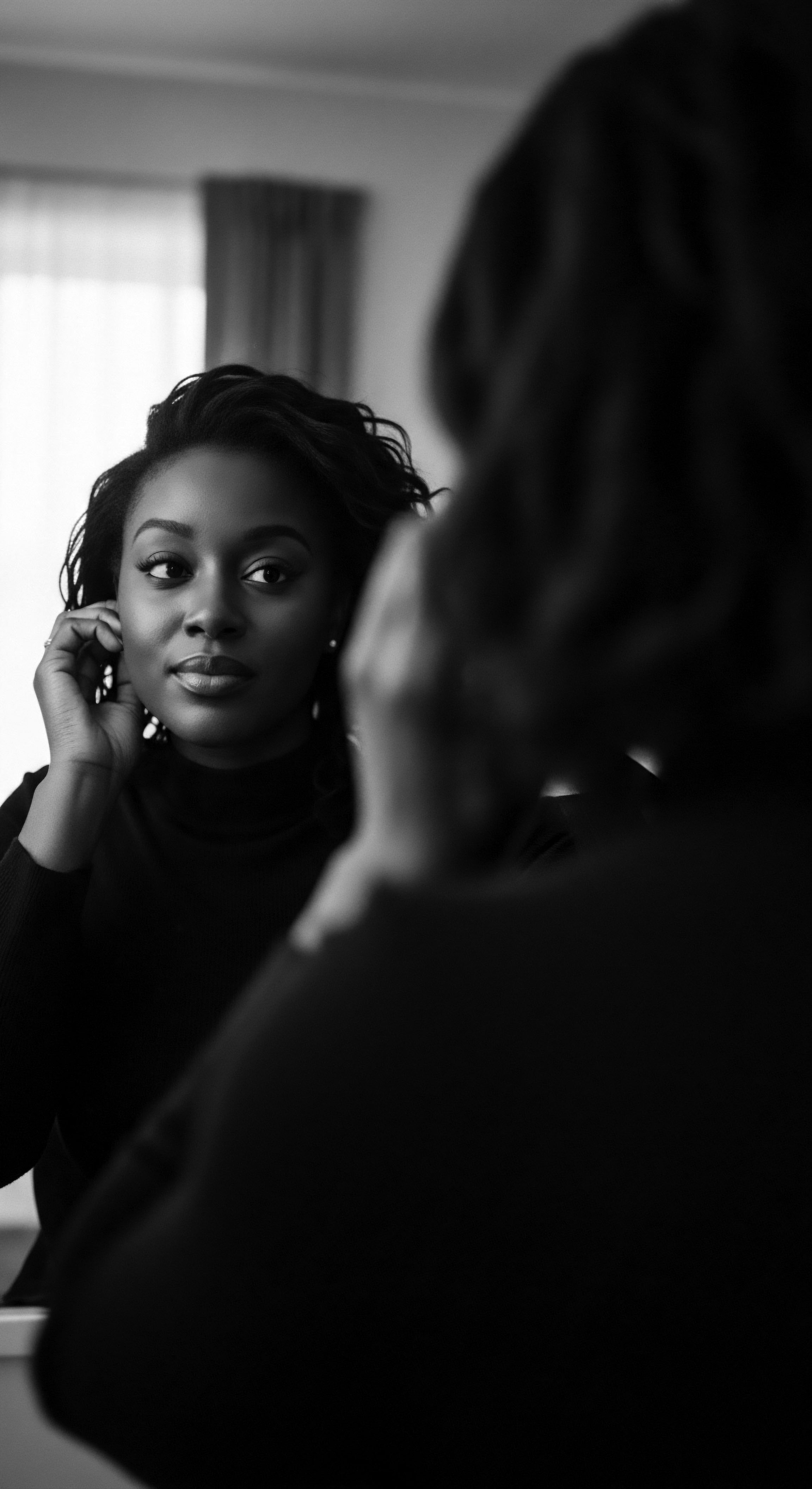
The Essential Lexicon of Textured Hair
Language shapes perception, and the words used to describe textured hair carry immense weight, particularly when examining forced migration. The English lexicon often fell short, lacking the specificity and reverence found in many indigenous African languages for hair. Consider the various terms for braids, twists, or intricate coiffures that were not merely styles but signifiers of lineage, region, or a particular moment in life.
- Irun ❉ A Yoruba term broadly for hair, carrying connotations of adornment and status.
- Dada ❉ A Yoruba term for naturally matted or dreadlocked hair, often associated with spiritual significance and power.
- Nkuto ❉ A term from certain West African cultures referring to a type of shea butter used for hair and skin, signifying traditional care.
These terms, though often lost in translation or suppressed, hint at a richness of cultural understanding that predates colonial encounters. As individuals were forcibly removed from their homelands, their linguistic ties to these traditional hair terms weakened, yet the practices themselves, the knowledge of how to care for and style textured hair, persisted, albeit often in clandestine forms. The very act of attempting to re-establish a semblance of these ancestral styles, even with limited tools and resources, became a defiant preservation of a heritage under siege. It was a quiet reclamation of self in a world determined to erase it.

Hair Growth Cycles and Historical Influences
The cyclical nature of hair growth—anagen, catagen, telogen—is a biological constant. Yet, for those undergoing forced migration, these cycles were deeply impacted by extreme stress, malnutrition, and unsanitary conditions. The body’s priority shifts to survival, often leading to telogen effluvium, a diffuse hair shedding.
This physical manifestation of trauma, however, runs parallel to the deeply symbolic impact on identity. When hair, a visible marker of health and cultural connection, thinned or ceased to thrive, it mirrored the fracturing of self under duress.
Despite these harsh realities, the enduring capacity of textured hair to grow, to regenerate, became a quiet symbol of hope and persistence. The resilience of the hair follicle itself, its continuous cycle of renewal, became a metaphor for the enduring spirit of a people. Ancestral practices, though perhaps modified, continued to honor this cycle.
The careful removal of shed strands, the gentle cleansing with natural elements found in new lands, the communal grooming—these acts, however small, reconnected individuals to a rhythm of life that transcended their immediate, brutal circumstances. They spoke to a heritage that prioritized care and continuity, even amidst disruption.
| Aspect of Hair Hair Structure |
| Pre-Migration Heritage Context A biological blueprint of adaptation, signifying diverse tribal affiliations and environments. |
| Impact and Adaptation During Forced Migration A durable physical link to homeland, providing natural protection, often forcibly altered as a tool of dehumanization. |
| Aspect of Hair Styling Practices |
| Pre-Migration Heritage Context Elaborate styles marking status, age, spiritual roles; a form of visual communication and artistic expression. |
| Impact and Adaptation During Forced Migration Reduced to simpler, concealed forms for survival, communication of escape routes, and clandestine preservation of identity. |
| Aspect of Hair Care Rituals |
| Pre-Migration Heritage Context Communal grooming, use of indigenous oils and herbs for health and spiritual blessing. |
| Impact and Adaptation During Forced Migration Scarcity of resources, adaptation to new flora; continued, often secret, practices fostering community and self-worth. |
| Aspect of Hair Symbolic Meanings |
| Pre-Migration Heritage Context Connection to ancestors, spiritual realms, wisdom, and community belonging. |
| Impact and Adaptation During Forced Migration A profound symbol of resistance, an unyielding connection to a lost past, a source of solace and shared defiance. |
| Aspect of Hair The essence of textured hair remained a powerful beacon of heritage, despite attempts to extinguish its deep significance during forced migration. |
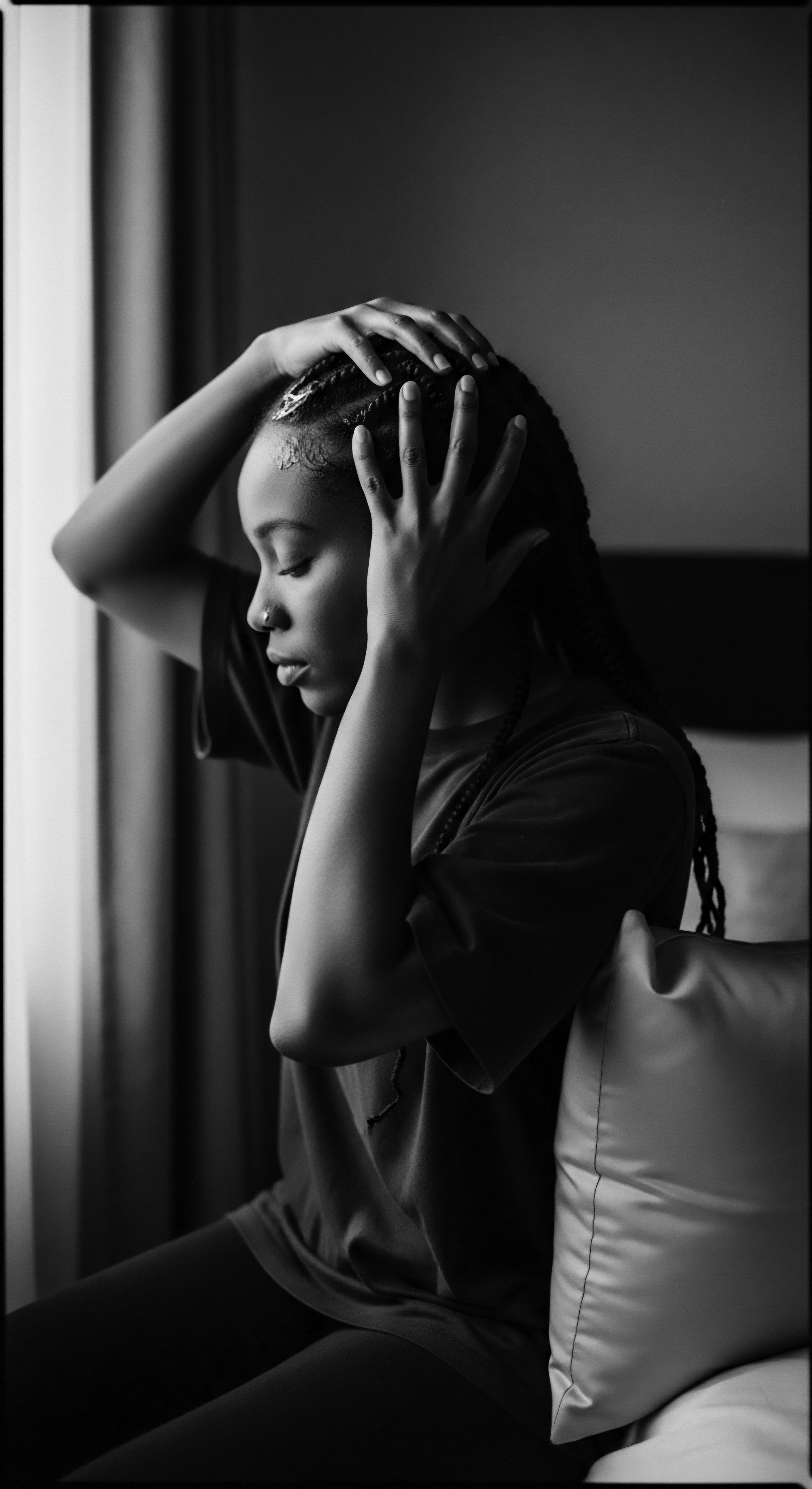
Ritual
Forced migration did not simply displace bodies; it sought to sever souls from their roots, to unravel the intricate fabric of identity. Yet, the ritualistic engagement with textured hair, often conducted in secret or under the very gaze of oppressors, became a defiant act of remembrance and self-preservation. These were not mere cosmetic practices; they were profound ceremonies of survival, each twist, braid, and adornment infused with the heritage of a stolen past and the urgent need for a future. The transformation of hair became a silent language, a way to speak of belonging when one possessed nothing, a whisper of dignity in the face of utter degradation.
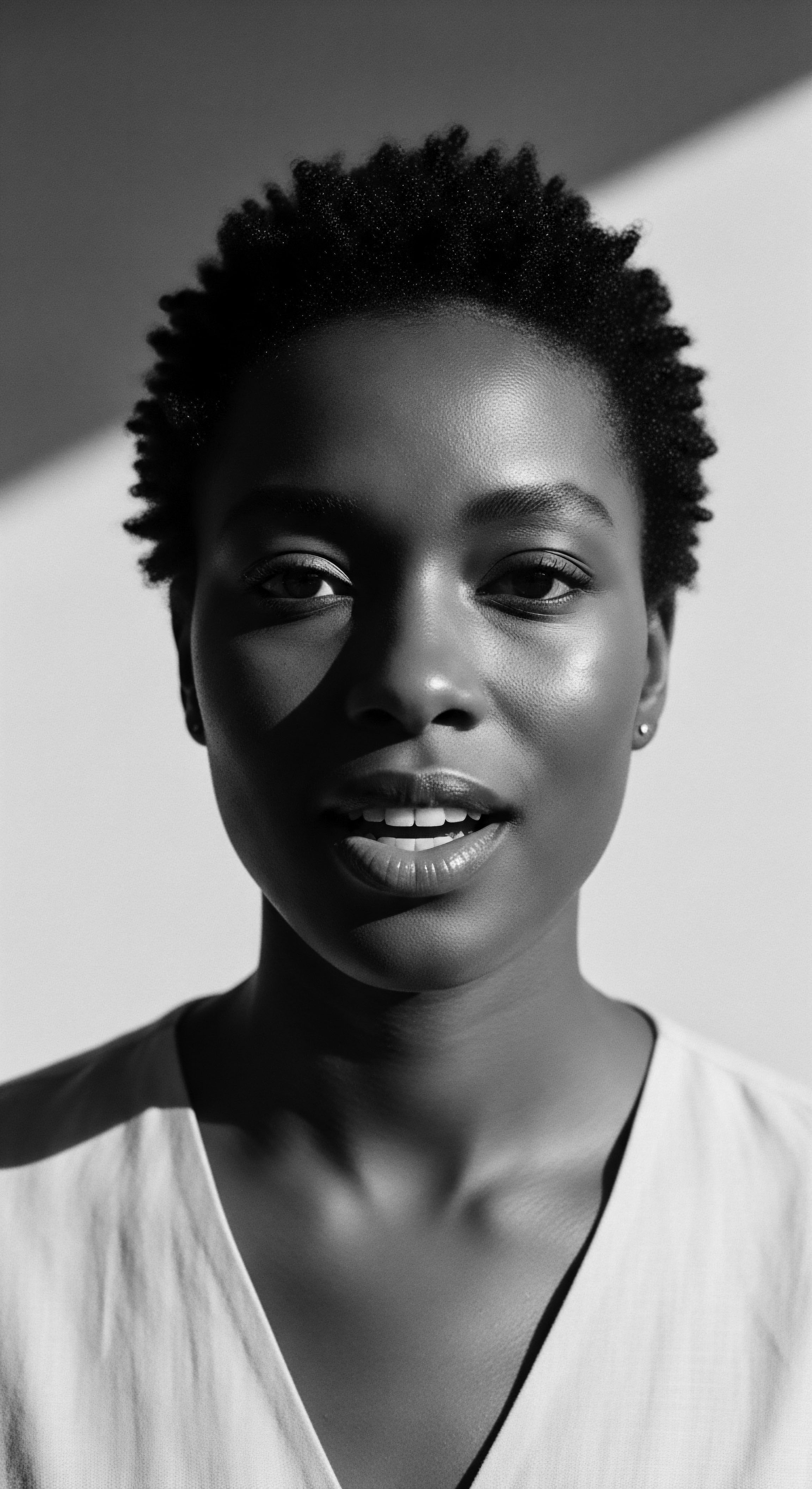
Protective Styling as Ancestral Ingenuity
The ancient art of protective styling, deeply rooted in African traditions, became a lifeline during forced migration. These styles, such as braids, cornrows, and twists, served multiple, layered purposes. They protected the hair from harsh environments, minimized breakage, and prolonged cleanliness, all critical considerations during arduous journeys and in conditions of extreme deprivation. Beyond the practical, however, these styles were profound cultural expressions.
In many West African societies, the patterns of cornrows could signify tribal identity, social status, or even a woman’s marital standing. For example, specific braiding patterns among the Mandinka people conveyed information about one’s lineage and village origin, a rich tapestry of social cues.
During the transatlantic slave trade, this ancestral ingenuity took on new, covert meanings. Cornrows were famously used to map escape routes, with grains of rice or seeds sometimes hidden within the braids, providing sustenance for the perilous journey to freedom. This transformation from cultural marker to clandestine map showcases the extraordinary adaptability and resilience of a heritage under siege.
The act of braiding itself, often a communal activity, became a moment of shared grief, whispered stories, and quiet resistance, fostering bonds of solidarity that transcended the brutality of their circumstances. The rhythmic pulling and twisting of strands became a meditative act, connecting individuals to a heritage of creativity and survival.

Natural Styling and Definition Techniques
Beyond intricate protective styles, the very manner in which textured hair was cared for and allowed to present itself naturally carried significant weight. Even in the direst conditions, efforts were made to maintain a connection to personal appearance, a small assertion of selfhood. While access to elaborate tools or products was virtually nonexistent, the knowledge of how to manipulate coils and kinks for definition, how to encourage their natural curl pattern, persisted.
This often involved simple acts ❉ finger coiling with water, using makeshift combs from found materials, or sharing precious scraps of fabric for tying. These actions, born of scarcity, nonetheless spoke to a deep ancestral respect for the hair’s inherent beauty.
Hair rituals, born of ancestral ingenuity, transformed into coded messages of survival and defiance during forced migration.
The preservation of natural hair patterns, even in its simplest forms, was a quiet rebellion against the enforced uniformity and European beauty standards that sought to dominate. It was a continuous declaration of an unyielding connection to African aesthetics and a profound affirmation of a heritage that valued natural form. The meticulous care of each curl, however humble, became a defiant affirmation of inherent worth, a small but significant act of sovereignty over one’s own body and identity.

Wigs and Hair Extensions
While direct evidence from the earliest periods of forced migration, particularly the transatlantic slave trade, regarding elaborate wigs or extensions for enslaved people is scarce due to their extreme material deprivation, the historical use of such hair manipulation in African societies is well-documented. Hair extensions, often made from human hair, plant fibers, or even wool, were common across various cultures for volume, length, or to create specific ceremonial styles. These were integral to status, identity, and ritualistic adornment.
Post-emancipation, and particularly during later waves of migration (e.g. the Great Migration in the U.S.), wigs and extensions took on different meanings. They could be a means of assimilation, allowing individuals to conform to dominant beauty standards for economic or social survival. However, they also served as a tool for self-expression and cultural continuation.
The ability to transform one’s hair, to emulate styles remembered from oral histories or glimpsed in passing, offered a sense of agency. It became a complex dialogue between the pressure to conform and the deep desire to reclaim a stylistic heritage that had been systematically attacked. The choice to wear wigs, for some, might have been a practical matter of protection or convenience, while for others, a means to present a specific identity in a hostile world.
The resilience of textured hair, both scientifically and spiritually, continues to defy erasure, providing a profound link to ancestral wisdom and a beacon for contemporary self-acceptance.

Heat Styling and Thermal Reconditioning
The concept of altering textured hair through heat, primarily for straightening, gained prominence in the diaspora as a response to Eurocentric beauty ideals and societal pressures. Early methods were rudimentary and often damaging, involving hot combs heated on stoves, a far cry from the nuanced scientific understanding of keratin and thermal protection we possess today. While these practices were frequently driven by the need for social or economic integration—a straightened appearance sometimes being a requirement for employment or safety—they also carry a complex legacy.
It is critical to acknowledge that this engagement with heat styling, though often born of oppressive circumstances, was also a testament to the ingenuity of Black women who sought to navigate and survive within a system designed to deny their inherent beauty. The scientific understanding of the hair’s protein structure, its susceptibility to thermal damage, and the need for heat protectants now allow for informed choices. This modern knowledge, however, can also help us contextualize the immense resilience of past generations who, with limited resources, still managed to care for and style their hair in ways that allowed them to move through society. Their practices, though sometimes harmful, were a complex part of a larger historical narrative of survival and adaptation.

The Complete Textured Hair Toolkit
The tools used for textured hair care and styling during forced migration were often crude, improvised, and deeply personal. They represented a profound connection to a heritage of ingenuity. Consider the broken pieces of shell, animal bone, or splintered wood fashioned into combs, used with remarkable skill to detangle and segment hair for braiding. These weren’t merely tools; they were extensions of an ancestral hand, embodying a legacy of resourcefulness.
From the communal fingers that meticulously parted and twisted strands, to the rare, carefully preserved wooden comb that traveled across continents, each implement, whether natural or makeshift, carried the weight of history. The very act of sharing these tools, or the knowledge of how to make them, became a powerful act of community building and cultural transmission. This echoes the broader history of self-reliance and adaptation in the diaspora, where beauty practices were not separate from survival but intrinsic to it. The simplicity of these early tools speaks volumes about the human capacity to create, to care, and to connect, even when stripped of almost everything.
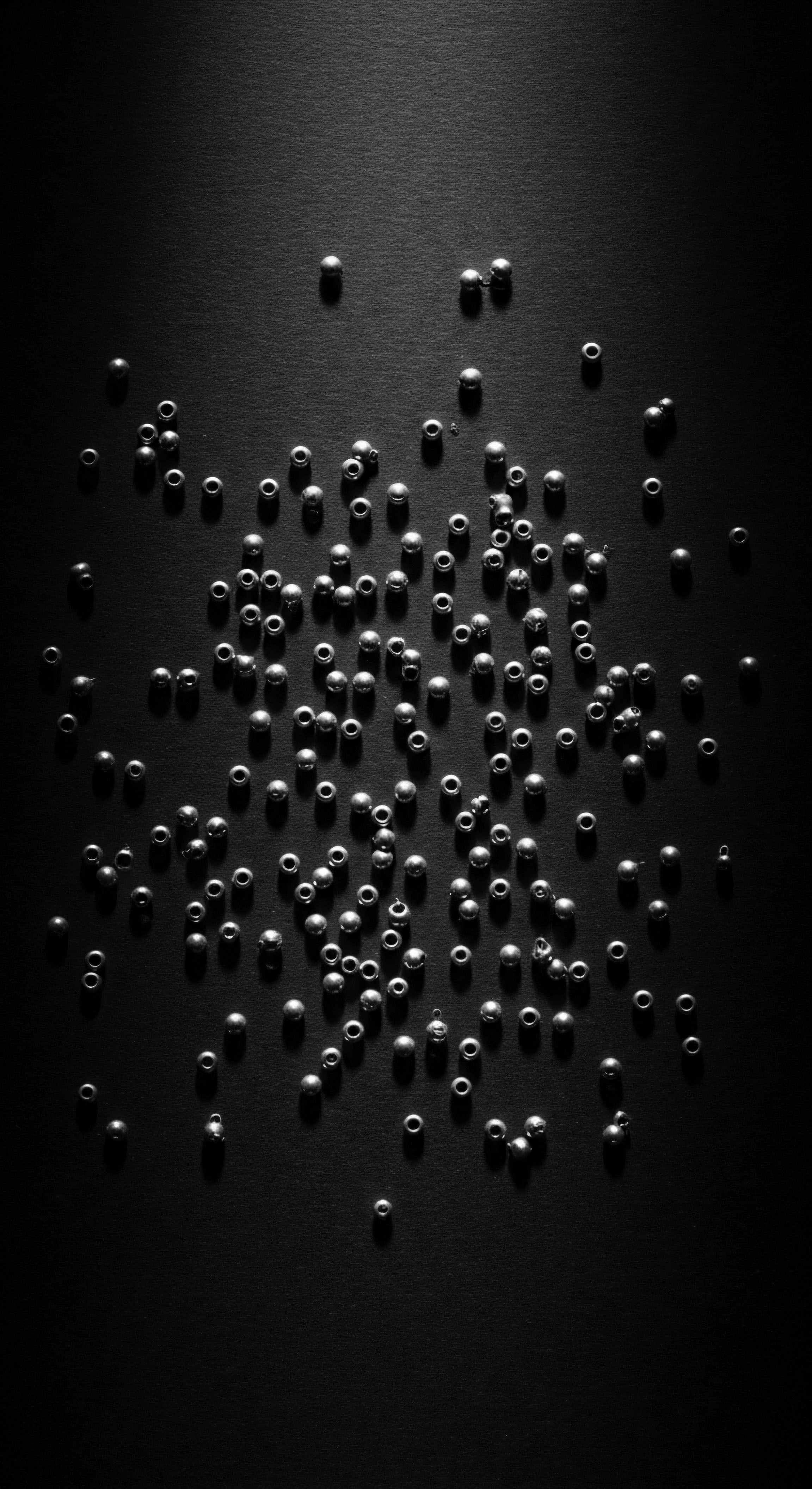
Relay
The journey of textured hair through forced migration was not a finite event; it was a relay, passing knowledge, struggle, and defiance from one generation to the next. The rituals of care, the silent acts of styling, and the very existence of textured hair became a living testament to an unbroken lineage, a thread connecting fragmented pasts to uncertain futures. This section delves into the intricate ways this relay continued, how care regimens adapted, how ancestral wisdom informed problem-solving, and how a holistic understanding of hair health became deeply intertwined with survival and identity. The depth of this connection reveals not just beauty practices, but a profound cultural intelligence.
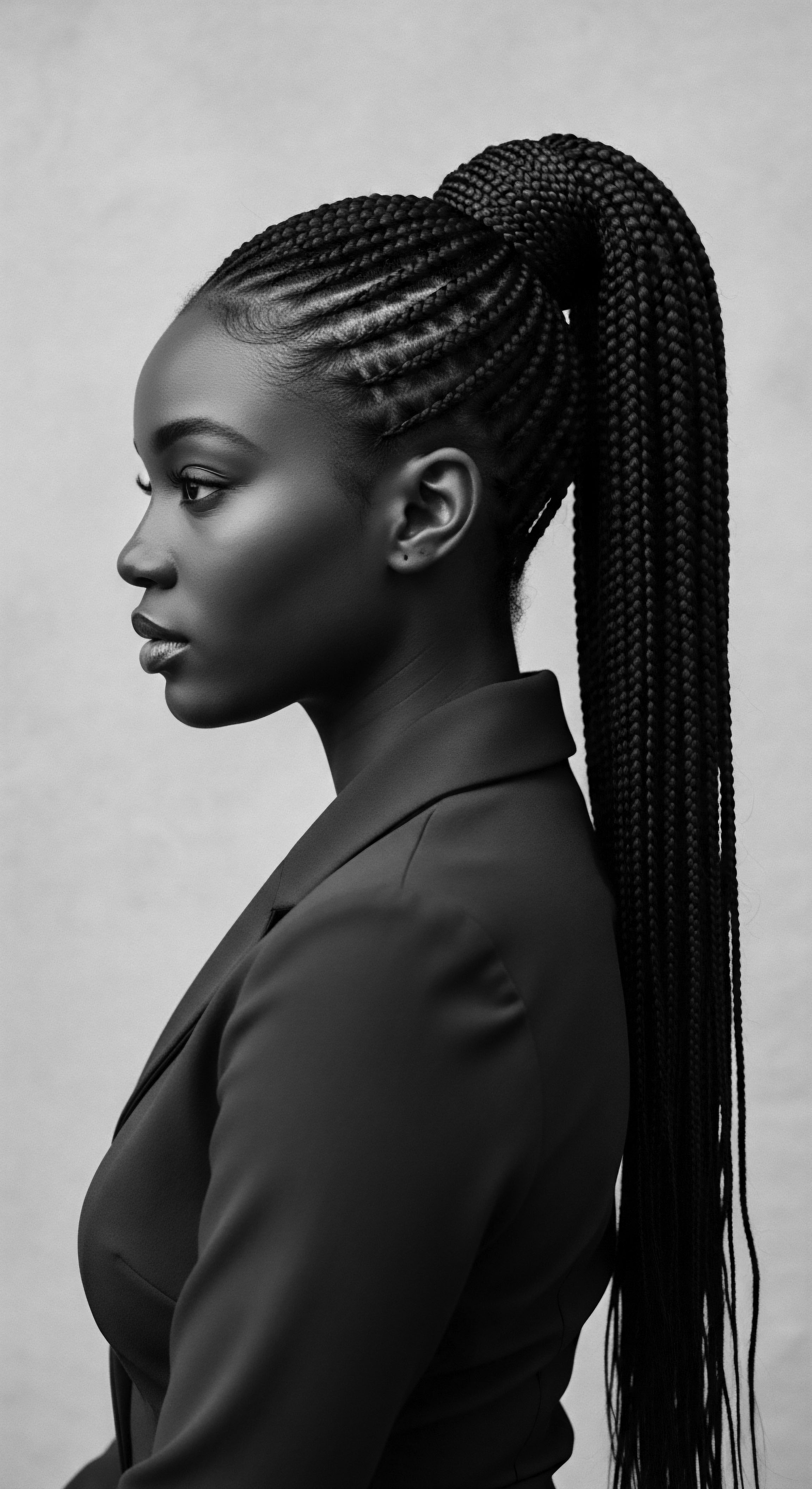
Building Personalized Textured Hair Regimens
In the aftermath of forced migration, establishing a personal hair care regimen was less about choice and more about necessity, a quiet act of reclaiming agency. Far from the curated product lines of today, these early regimens were crafted from memory, adaptation, and shared communal wisdom. The enslaved and newly freed pieced together their practices from what little was available, often drawing on fragmented ancestral knowledge of natural ingredients and techniques.
For instance, the use of clay-rich soils for cleansing, or plant-based oils and butters—like shea butter (karité), even if in its rawest, most unrefined forms—for moisture and protection, speaks to a deeply resourceful approach. These were not merely “products”; they were remnants of a heritage, applied with intention and a sense of sacred duty to the self.
The regimens developed in the diaspora, often passed down verbally, were inherently personalized, dictated by the unique needs of the individual’s hair type, the available resources, and the prevailing conditions. This organic evolution of care, rather than a top-down instruction, mirrors the adaptive nature of human survival. It was a testament to the fact that even when stripped of almost everything, the impulse to care for one’s physical self, particularly a feature as symbolic as hair, remained a powerful driver of identity.
How did these ancestral practices lay the groundwork for contemporary hair wellness?
The foundational principles of these early regimens—cleansing, moisturizing, protecting—are the very cornerstones of modern textured hair care. The distinction lies in the intentionality and the deep connection to survival rather than mere aesthetics. A 2017 study on the impact of historical hair practices among African American women highlights how these early, often communal, acts of grooming created psychological spaces of solace and affirmation, functioning as a vital component of mental and emotional well-being amidst trauma. This shows that the regimen was never just about the hair itself, but about the holistic well-being of the individual within a hostile environment, drawing directly from a deep heritage of self-care.
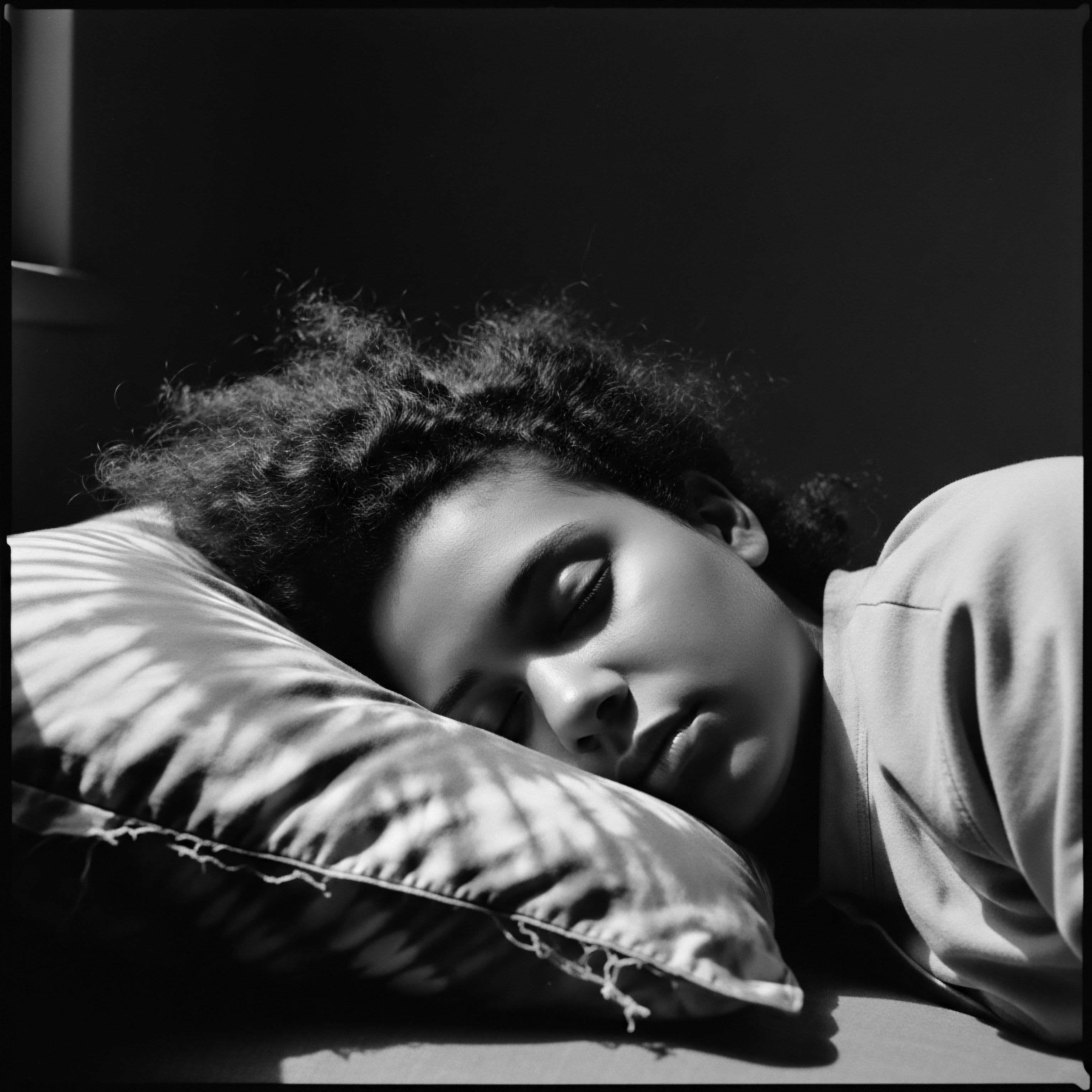
The Nighttime Sanctuary ❉ Essential Sleep Protection and Bonnet Wisdom
The simple bonnet or headwrap, often seen today as a mere accessory, holds a profound historical and cultural weight, particularly in the context of forced migration and its enduring legacy. For enslaved people, a cloth wrap offered not just protection from dust or insects during the day, but a vital barrier against the harsh realities of nightly toil and inadequate shelter. At night, it became a literal and symbolic sanctuary. Wrapping the hair protected delicate strands from tangling and breakage against rough bedding, preserving the labor-intensive styles that might have been a source of personal pride or a means of coded communication.
Beyond the practical, the nighttime wrapping ritual was a deeply personal, often solitary act of self-care. It was a moment of privacy, however fleeting, where one could tend to their hair, and by extension, their inner world. The headwrap, in its various forms, became a symbol of resilience, a silent declaration that even in chains, one retained a measure of control over their physical appearance and, by extension, their dignity.
This practice, passed down through generations, still echoes in the modern use of satin bonnets and scarves, a continuity of a heritage of protection and self-preservation. It is a quiet affirmation that even in rest, one’s crown deserves reverence.
From whispered care rituals to resilient nighttime practices, textured hair regimens became profound acts of self-preservation and ancestral continuity.
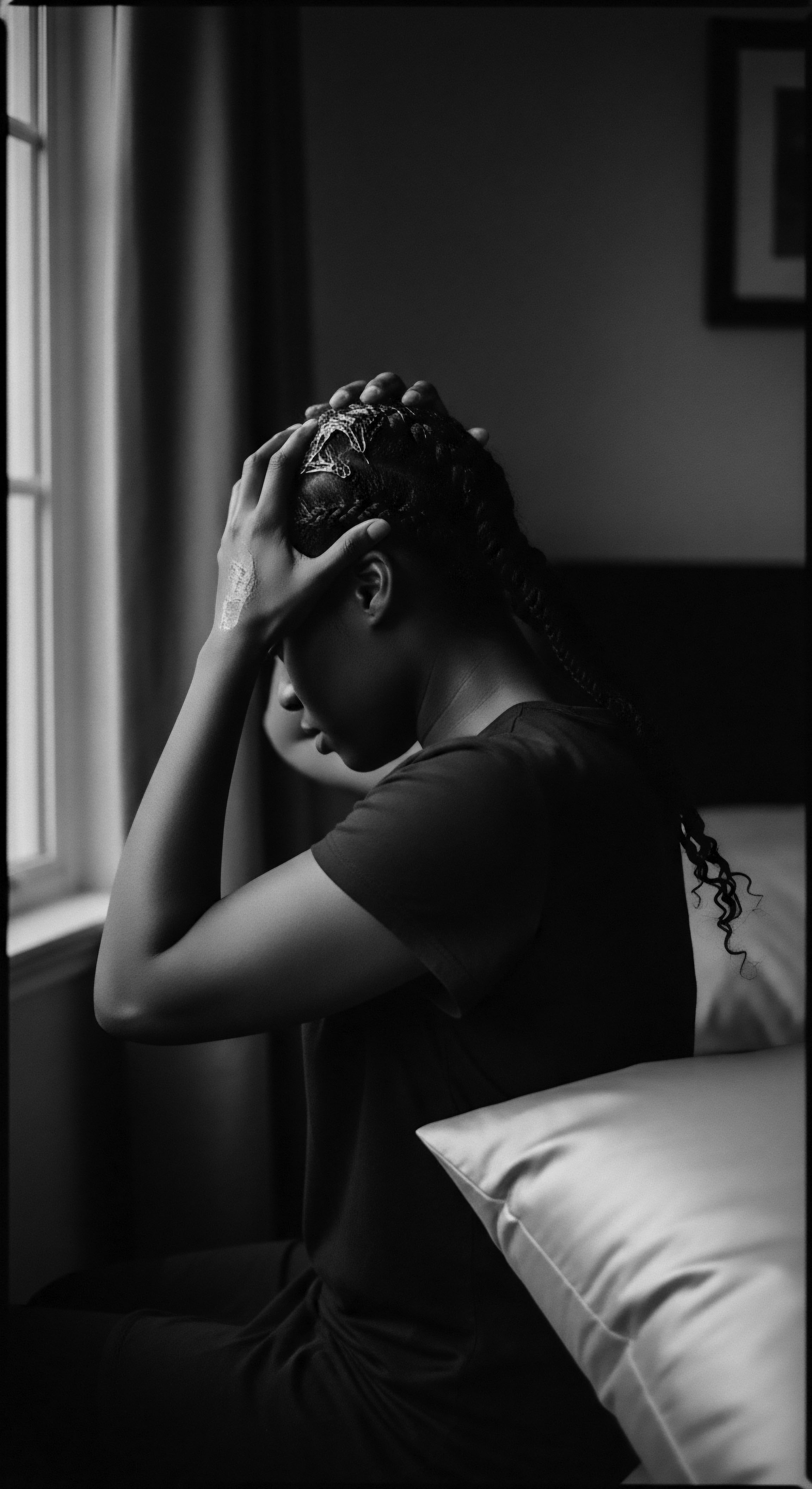
Ingredient Deep Dives for Textured Hair Needs
The forced relocation meant a drastic change in accessible resources, yet the ingenuity of those displaced ensured a continuation of hair care using available ingredients. The ancestral knowledge of botanicals, often carried in memory, adapted to new flora. For instance, while traditional shea butter might have been scarce in the Americas, substitutes like animal fats (e.g.
lard) or local plant oils became essential for moisturizing and sealing strands. The knowledge of how to prepare infusions from barks, leaves, or roots for cleansing and conditioning, even if the specific plants changed, demonstrated an incredible continuity of scientific herbalism.
These improvised formulations were not random; they were a testament to an inherited understanding of natural properties—emollients, humectants, antimicrobials. The application of these ingredients was often accompanied by prayer or song, transforming a mundane act into a spiritual ritual, further solidifying the connection to ancestral practices. The ability to distinguish which plants offered cleansing properties, which provided moisture, and which soothed the scalp, speaks to a sophisticated, albeit undocumented, ethno-botanical heritage.
What traditional ingredients, beyond those well-known, played a vital role in hair care practices during post-migration adaptation?
Beyond shea and palm oil, which were part of the memory, various local plants adopted in new environments played a crucial role. For instance, aloe vera, a plant native to Africa but widely available in the Americas, likely became a staple for its soothing and moisturizing properties. The use of certain barks or roots for creating lye for soap-making, or even just for their conditioning properties, would have been common. These were not just functional; they were a direct link to a knowledge system that prioritized natural resources and their inherent power.

Textured Hair Problem Solving Compendium
The challenges faced by textured hair—dryness, breakage, tangles—were exacerbated by the conditions of forced migration. The lack of proper nutrition, hygiene, and safe environments meant that hair health often suffered tremendously. Yet, amidst these severe problems, solutions were sought and applied, again, drawing deeply from ancestral wisdom.
The emphasis on careful detangling, often with fingers or improvised wide-tooth implements, was a direct response to preventing further damage. The application of whatever oils were available was a constant battle against desiccation.
Communal grooming sessions became informal clinics for problem-solving. Elders, often repositories of traditional knowledge, would share remedies for scalp ailments, shedding, or brittleness. These solutions were often holistic, recognizing the link between physical health, emotional well-being, and hair vitality.
The problem-solving was not merely about treating symptoms; it was about maintaining a sense of normalcy, a connection to beauty, and an affirmation of life in the face of death and despair. This collective approach to hair health underscores a heritage of mutual support and shared wisdom that extended even to the most personal aspects of life.

Holistic Influences on Hair Health
The Roothea ethos deeply acknowledges that hair health is never isolated from overall well-being. This holistic perspective is profoundly rooted in ancestral African philosophies, where the body, mind, and spirit are understood as interconnected. For those experiencing forced migration, this holistic view became not just a philosophy but a survival strategy.
The care of hair, even in its simplest forms, was an act of maintaining spiritual and psychological integrity. It was a conscious effort to keep one’s spirit alive.
The communal nature of hair grooming in many African societies meant it was a time for storytelling, for transmitting history, for reinforcing cultural values. This social aspect of hair care, though often diminished or forced underground during migration, continued to be a powerful source of healing and resilience. The shared touch, the murmured prayers, the recounting of lineage while braiding—these were not just social interactions; they were powerful healing modalities. This enduring heritage of holistic care, where hair is seen as a barometer of spiritual and physical health, continues to shape contemporary wellness movements that prioritize natural ingredients, mindful practices, and a deep reverence for the body’s interconnectedness.
This relay of knowledge, from elemental biology to nuanced care, was not just about survival; it was about a profound, unyielding dedication to identity. The textured strand, therefore, carried not just biological markers, but the very soul of a people.

Reflection
The textured hair, that resilient helix, has journeyed through epochs of profound disruption, bearing witness to both unspeakable pain and unyielding spirit. Its story, deeply woven into the fabric of forced migration, is more than a historical account; it is a living, breathing testament to the enduring power of identity. Each coil, each kink, each wave holds the memory of ancestral lands, the resilience of those who traversed impossible distances, and the defiant beauty of those who refused to let their essence be erased. This heritage is not a static relic of the past; it is a dynamic, pulsating force that continues to shape lives, inform self-perception, and inspire connection across the global diaspora.
The exploration of how textured hair symbolized identity during forced migration—from its fundamental anatomy and the ingenuity of its styling to the intimate rituals of its care—reveals a profound narrative of human perseverance. It highlights how, even when stripped of land, language, and liberty, the profound human need to express selfhood found expression in the very fibers of one’s being. The inherited wisdom, the adaptive practices, and the deep cultural significance attached to hair transformed it into a symbol of resistance, a hidden map to freedom, and a quiet declaration of enduring spiritual and communal bonds. It was a living archive, etched in strands.
Today, as we nurture and celebrate textured hair, we do more than simply engage in a beauty regimen. We honor the sacrifices, the ingenuity, and the unshakeable spirit of those who came before us. We participate in a continuous relay of knowledge, a dialogue between ancient practices and modern understanding.
The very act of caring for our textured hair becomes a deeply personal yet profoundly communal act of remembrance, a way to connect with the ‘Soul of a Strand’—the luminous, unbreakable essence of our collective heritage. In this continuous act of reclamation, we ensure that the story of textured hair, as a symbol of identity through forced migration, continues to be told, not as a lament, but as a triumphant hymn of resilience and belonging.

References
- Thompson, U. (2007). Black Women and the Power of Hair ❉ A Psychological and Cultural Analysis. Carolina Academic Press.
- Hunter, L. R. (2017). Buying Race ❉ Cosmetics and Culture in the African American Marketplace. Oxford University Press.
- Byrd, A. L. & Tharps, L. D. (2001). Hair Story ❉ Untangling the Roots of Black Hair in America. St. Martin’s Press.
- White, D. G. (1999). Ar’n’t I a Woman? ❉ Female Slaves in the Plantation South (Revised ed.). W. W. Norton & Company.
- Opoku, K. A. (1978). West African Traditional Religion. FEP International Private Limited.
- Gordon, L. R. (2000). Existentia Africana ❉ Understanding Africana Existential Thought. Routledge.
- Patton, G. R. (2006). African-American Hair ❉ An Examination of the Intersections of Race, Gender, and Beauty. University of California Press.
- Mercer, K. (1994). Welcome to the Jungle ❉ New Positions in Black Cultural Studies. Routledge.
